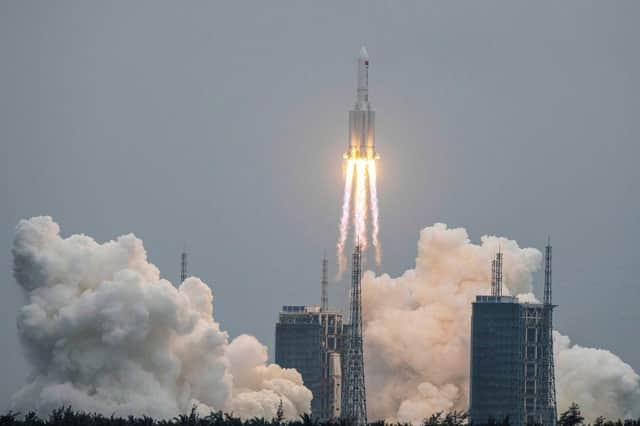Chinese rocket falling to Earth may survive re-entry


An out-of-control Chinese rocket falling to Earth may partially survive its descent to Earth, making an uncontrolled re-entry.
The 30-metre high core of the Long March 5B rocket went into a temporary orbit on April 29 and is expected to crash land somewhere on Earth - with experts fearing it could strike an inhabited area.
Advertisement
Hide AdAdvertisement
Hide AdThe Long March launched the “Heavenly Harmony” unmanned core module as part of China’s first module for its Tianhe space station, after which the Long March entered its uncontrolled orbit.
“It’s potentially not good,” Jonathan McDowell, Astrophysicist at the Astrophysics Center at Harvard University, told The Guardian.
“Last time they launched a Long March 5B rocket they ended up with big long rods of metal flying through the sky and damaging several buildings in the Ivory Coast,” he said.
“Most of it burned up, but there were these enormous pieces of metal that hit the ground. We are very lucky no one was hurt.”
Advertisement
Hide AdAdvertisement
Hide AdCurrently, the rocket is orbiting Earth at such speed that it is difficult to tell where parts might land when it re-enters the atmosphere, though as the Earth is 71 per cent water, it’s most likely it’ll fall into the sea.
McDowell, however, said some pieces will survive and create what the equivalent “of a small plane crash scattered over 100 miles”.
He called the move by China “negligent” given no object over 10 tonnes has been left in uncontrolled orbit since 1990
The rocket is expected to return to Earth around May 10, with any small changes in velocity likely to dramatically alter its landing position.
Advertisement
Hide AdAdvertisement
Hide AdMcDowell said experts will be able to predict the rocket’s landing time within a six-hour window when it’s clear what day it will return to Earth.
The launch marks one of 11 planned missions by China to construct their T-shaped space station - likely completed by late 2022.
